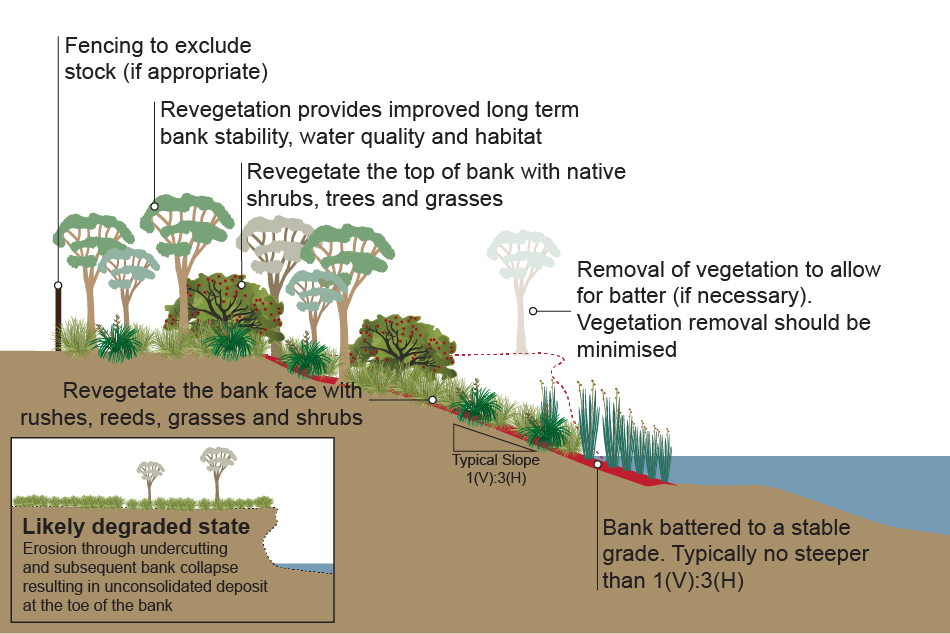|
|
Bank batteringBank battering is a technique that involves excavation works to reduce bank slope in order to improve riverbank stability and create more favourable conditions for vegetation establishment. In many instances, bank battering is limited to the upper bank profile. Bank battering requires combined vegetation management and physical intervention. This technique does not address the cause of bank steepening, and it is recommended that the processes responsible for any channel changes be addressed rather than just managing the symptoms. Potential benefits from this intervention:
Potential negative implications from this intervention:
Intervention considerations:
Additional informationPublications: Department of Sustainability and Environment (DSE). 2007. Technical Guidelines for Waterway Management, Department of Sustainability and Environment, Victoria. Last updated: 22 June 2022 This page should be cited as: Department of Environment, Science and Innovation, Queensland (2022) Bank battering, WetlandInfo website, accessed 8 May 2025. Available at: https://wetlandinfo.des.qld.gov.au/wetlands/management/rehabilitation/rehab-process/step-4/intervention-options/bank-battering-mod.html |

 — Department of the Environment, Tourism, Science and Innovation
— Department of the Environment, Tourism, Science and Innovation


